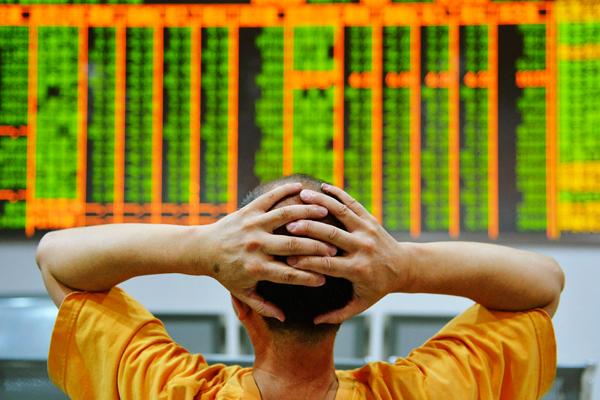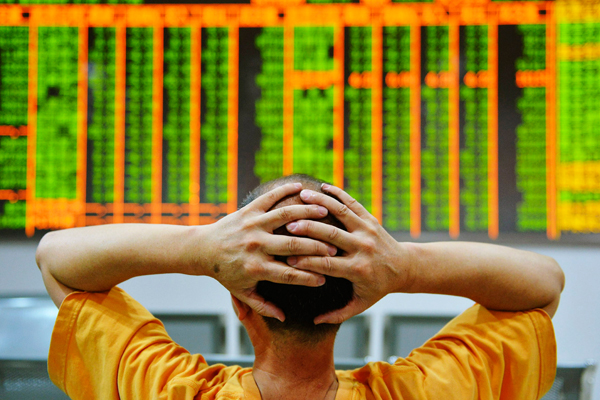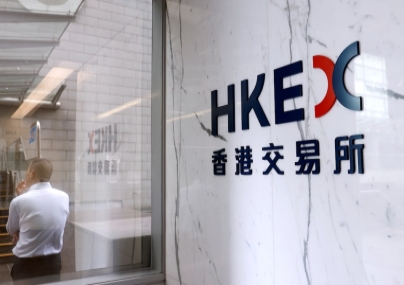
China’s attempts to stave off a full-blown crash have included unleashing unprecedented emergency support measures, reports Alex Richardson
Chinese stocks rebounded earlier this month, after Beijing unleashed an unprecedented series of support measures to stave off the prospect of a full-blown crash that was threatening to destabilize the world’s second-biggest economy.
In an extraordinary flurry of policy moves, brokerages and fund managers vowed to buy massive amounts of stocks, helped by China’s state-backed margin finance company, which in turn would be aided by a direct line of liquidity from the central bank.
Investors, who had ignored official measures to prop up the market as equity indexes slid around 12 percent in the first week of July, finally reacted, with the CSI300 index of the largest listed companies in Shanghai and Shenzhen jumping 4 percent, while the Shanghai Composite Index gained 3 percent.
Blue chips, the explicit target of the stabilisation fund, outperformed stocks on the small-cap ChiNext indexes.
The rapid decline of China’s previously booming stock market, which had recently fallen around 30 per cent from a mid-June peak, had become a major headache for President Xi Jinping and China’s top leaders, who were already struggling to avert a sharper economic slowdown.
In response, China has orchestrated a halt to new share issues, with dozens of firms scrapping their IPO plans in separate but similarly worded statements over the weekend, in a tactic authorities have used before to support markets.
China Vanke Co Ltd, the country’s largest developer, said in a statement to the Hong Kong Stock Exchange that it planned to repurchase up to 10 billion yuan ($1.6 billion) worth of its domestic shares to protect investor interests.
China’s state media rolled in behind the official moves with supportive reports and commentaries.
“Rainbows always appear after rains,” said an editorial by the People’s Daily, the mouthpiece of the ruling Communist Party. “(China has) the conditions, ability and confidence in maintaining capital market stability,” the newspaper said.
Oliver Barron, China policy research analyst at NSBO, said it wasn’t just faith in the markets at stake.
“After the market continued to fall despite myriad support measures, the government reached peak panic mode and must have worried that investors would not only lose confidence in the markets, but in the government itself,” he said.
Back to topTOO FROTHY
China stocks had more than doubled over the past year, despite a cooling economy and weakening corporate earnings, resulting in a market that even China’s bullish securities regulators eventually admitted had become too frothy.
But the slide that began in mid-June, and which the China Securities Regulatory Commission initially tried to downplay as a “healthy” correction, quickly showed signs of getting out of hand.
A surprise interest-rate cut by the central bank at the end of June, relaxations in margin trading and other “stability measures” did little to calm investors, many of whom have borrowed heavily to play the stock market.
In a series of initial announcements, China’s top brokerages pledged to collectively buy at least 120 billion yuan ($19.3 billion) of shares to help steady the market, and would not sell holdings as long as the Shanghai Composite Index remained below 4,500, a level last seen on June 25.
The China Mutual Fund Association said 25 fund companies also pledged to buy shares. Another 69 fund firms said they would do the same.
In addition, 28 companies that had been approved to launch IPOs all announced they had suspended their plans.
The U-turn is consistent with past IPO freezes in China when share markets were falling sharply, though they are usually spun as spontaneous company decisions, not as government directives.
China state-owned investment company Central Huijin said it had recently been buying exchange-traded funds and would continue to do so.
The combined effect of the policies is to signal to China’s army of retail investors, who conduct around 85 percent of share transactions, that the government is now standing behind the stock market.
Back to topCONTINUE VETTING
China’s securities regulator said it will not stop vetting new initial public offerings, after share sales were postponed by 28 companies earlier this month because of recent market volatility.
Citing unidentified sources, the Wall Street Journal previously reported that the government had decided to suspend IPOs to help to stabilize the stock market.
In a statement posted on its official weibo, the China Securities Regulatory Commission said there will not be new IPOs in the near term but it will not stop vetting new deals.
“After the 28 companies suspended their IPOs, there will be no new IPOs in the near term. Going forward, the approvals will not stop but the number of IPOs and the fundraising size will be greatly reduced,” the commission said.
Back to topHIDING IN THE SHADOWS
China’s ‘grey market’ lenders are lining their pockets even as the bourses bomb, find Engen Tham and Shu Zhang
China’s vast network of “grey market” lenders have reaped big profits from lending money to individuals and companies to buy stocks, but as markets slump their customers face heavy losses after borrowing up to 10 times their starting capital.
Global investors are increasingly worried about the scale of leverage in China’s stock market, fearing the impact of a crash on the ordinary retail investors who dominate it could destabilize the world’s second biggest economy just as growth is slowing.
The risks have been magnified by the grey or shadow market – a network of state-owned commercial banks, including the largest five state-owned lenders, as well as trust companies, fund managers, and an endless variety of self-styled stock matching endowment firms. Many of the latter, which are essentially grassroots finance firms, were founded in the last year and often have backing from government enterprises but operate outside the remit of China’s securities or banking regulators.
This financing, which can carry annualised interest rates of up to 17 percent, was the financial rocket fuel that powered a 110 percent gain in Shanghai stocks between November and early June, by allowing borrowers to substantially leverage their capital.
These firms continue to benefit from interest payments and fees, even as more than $2.5 trillion was wiped from China’s market capitalization over a period last four weeks.
Excessive leverage can be lethal in stock markets, because as overextended borrowers sell shares to meet “margin calls” they drive prices down further, creating a vicious cycle.
Light regulation of shadow lending underscores Beijing’s quandary as it looks to both protect the army of mom-and-pop investors, who comprise 80 percent of the stock market, while supporting a rally that has helped raise more than $63 billion from primary and secondary equity sales in China and Hong Kong this year alone.
“This needs to be controlled,” said Jiahe Chen, chief strategist at Cinda Securities, adding that when markets were falling high leverage could create a domino effect.
GREY NETWORK
Calculating the size of China’s grey financing network is tricky, bankers say, due to its loose regulation. Total margin debt at brokerages stood at 2.2 trillion yuan in late June, but the amount of grey market leverage may exceed that amount.
For China’s trust companies alone, stock assets increased by 225 billion yuan ($36 billion) from the previous quarter in the first three months this year, reaching 777 billion yuan by March 31, according to China Trust Association data.
That helped drive a 33 percent year-on-year gain in total profit for China’s 68 trust firms in the first quarter of 2015.
Typically, banks cooperate with trust firms and stock matching endowment companies to raise cash by issuing wealth management products (WMPs) that are sold to banking clients.
These products generate funds that are then used to finance individual and corporate stock market investors at ratios of up to 1:10, according to executives familiar with the businesses.
The arrangement highlights a persistent faultline running through China’s financial system, despite Beijing’s efforts to regulate the shadow system – people buying WMPs through mainstream banks may be, knowingly or not, left highly exposed to the vagaries of the stock market.
Trust companies have also used such products to back real estate loans, corporate junk bonds and short-term over-the-counter debt instruments.
“Riskier clients go to trust companies because they can’t get loans from banks,” said Edmond Law, banks analyst at UOB Kay Hian (Hong Kong) Ltd, adding that investors in trust products backed by lending to these clients were at higher risk.
‘GOOD MONEY FOR NOTHING’
The financing firms limit their own risk by requiring investors to add cash or sell shares once their accounts lose anywhere from 50 to 70 percent of their original investment value, executives said.
Two large and two smaller trust firms told Reuters that large state-owned banks such as Bank of China Ltd (BoC) and Bank of Communications Co (BoCom) Ltd, as well many smaller lenders, indirectly channel money into the stock market this way.
“Banks are making good money for nothing,” said an executive at a Shenzhen-based stock-matching endowment firm. His firm, a subsidiary of a central-government owned state enterprise, raises funds by selling WMPs through Bank of China.
It works like this: BoC raises 40 million yuan by selling the WMP to its clients, after a stock matching firm provides 20 million yuan in collateral. That creates a 60 million yuan pool that the stock matching firm can use to sell leverage to its customers.
BoC charges 10 percent annualised interest for such products, allowing the stock matching firm the opportunity to earn as much as 5 percent, based on the 15 percent annualised interest it charges clients.
Using trust firms as conduits, banks also invest money in funds that pile capital directly into stock markets, according to banking executives familiar with the situation.
BoC and BoCom declined to comment when contacted by Reuters.
A mid-level banker with one of the top five state-owned banks said that lending to trust companies involved very little risk to lenders themselves, as agreements were structured so banks are paid first if the markets tank.
“There are things that banks can’t do directly because of risk to asset quality or reputation,” he said. “So we use trusts as channels.”
Back to top


